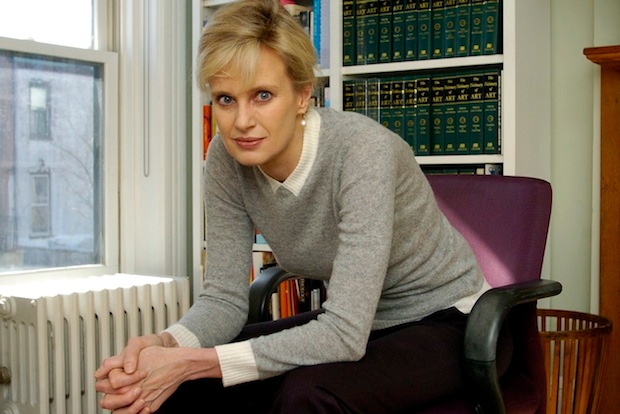Siri Hustvedt’s new novel isn’t exactly an easy read — but the casual bookshop browser should be reassured that it’s nowhere near as punishing as the opening pages might suggest. In the ‘editor’s introduction’ we’re told that what follows is an anthology of writings by and about the late artist Harriet Burden — known to friends as Harry — with her own contributions taken from a series of notebooks labelled by letters of the alphabet:
Notebook H, on Edmund Husserl, has pages on Husserl’s idea about ‘the intersubjective constitution of objectivity’ and the consequences of such an idea on the natural sciences… Q is devoted to quantum theory and its possible use for a theoretical model of the brain.
At this point, even the most high-minded of book-lovers may feel in no rush to read on. Not to do so, however, would be a bad mistake — because The Blazing World gradually proves both intellectually and emotionally gripping.
The widow of a wealthy New York art dealer, Harry had responded to years of critical neglect by putting on three exhibitions, each passed off as the work of an existing younger male artist. In this way, she’d investigate ‘why people see what they see’. Had her identity been known, would these exhibitions still have been praised for their daring? Or would they look ‘old-womanish all of a sudden’?
The other voices in the novel belong to an extensive range of friends, family, collaborators and commentators — and Hustvedt does all of them with equal authority: from Harry’s loving but occasionally exasperated daughter Maisie to the gay black artist who fronts her second exhibition; from Harry’s loving but occasionally exasperated partner Bruno to a flaky New-Age assistant. Despite her obvious admiration for her protagonist, Hustvedt is never afraid of letting us hear the case for the prosecution either. One critic, for example, accuses Harry of ‘half-baked existentialism’ — and even wonders if ‘there might be more men than women in art because men are better artists’.
Nonetheless, I can’t imagine many readers not sharing Hustvedt’s admiration. A ‘dyed-in-the-wool bluestocking’, who ‘drips with earnestness’ (as two of Harry’s most loyal supporters put it) may not sound like irresistible company. Yet, increasingly, her intensity becomes a part — but only a part — of her undeniable charm, as she alternately rages against and ruefully ponders her lot.
Admittedly, the more abstract ideas that we were warned about in the introduction do feature regularly, with footnotes referring us to such books as Pauli Pylkkö’s The Aconceptual Mind: Heideggerian Themes in Holistic Naturalism (1998). But Harry also writes with great tenderness about her parents, husband and, above all, her children. In fact, the longer the book goes on, the more prominent the everyday human stuff becomes — or, as Harry says, ‘Theory is good, but it does not prevent things from happening.’ The generosity of the storytelling leads to full and often affecting backstories for all the main characters. And in what might be the most subversive move of the lot, Hustvedt gives the last word to the New-Age flake, as if suggesting that — or at least raising the question of whether — intellectual rigour might in the end matter far less than kindness.
This, though, is not a novel with any sort of single message, teasing or otherwise. Like Maisie, Hustvedt clearly doesn’t want to ‘explain away the mess’ of Harry’s life. Instead, she puts her faith in Harry’s own theory that ‘polyphony is the only route to understanding’. The result — with its familiar Hustvedt themes of art, family, psychiatry, feminism, New York, memory and what makes the self — feels like one of those novels in which a well-established author triumphantly sums up, and possibly even surpasses, everything they’ve done before.





Comments